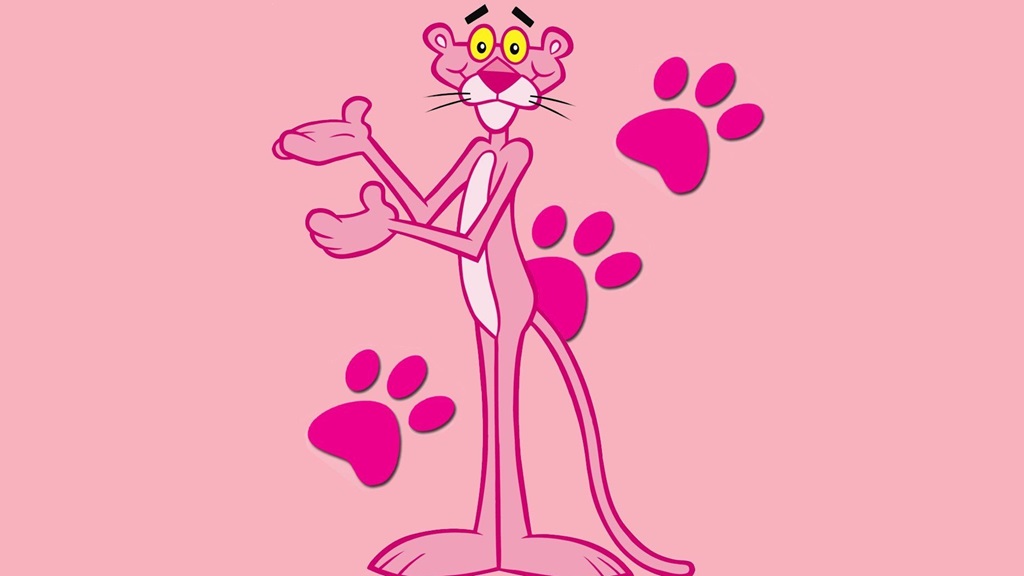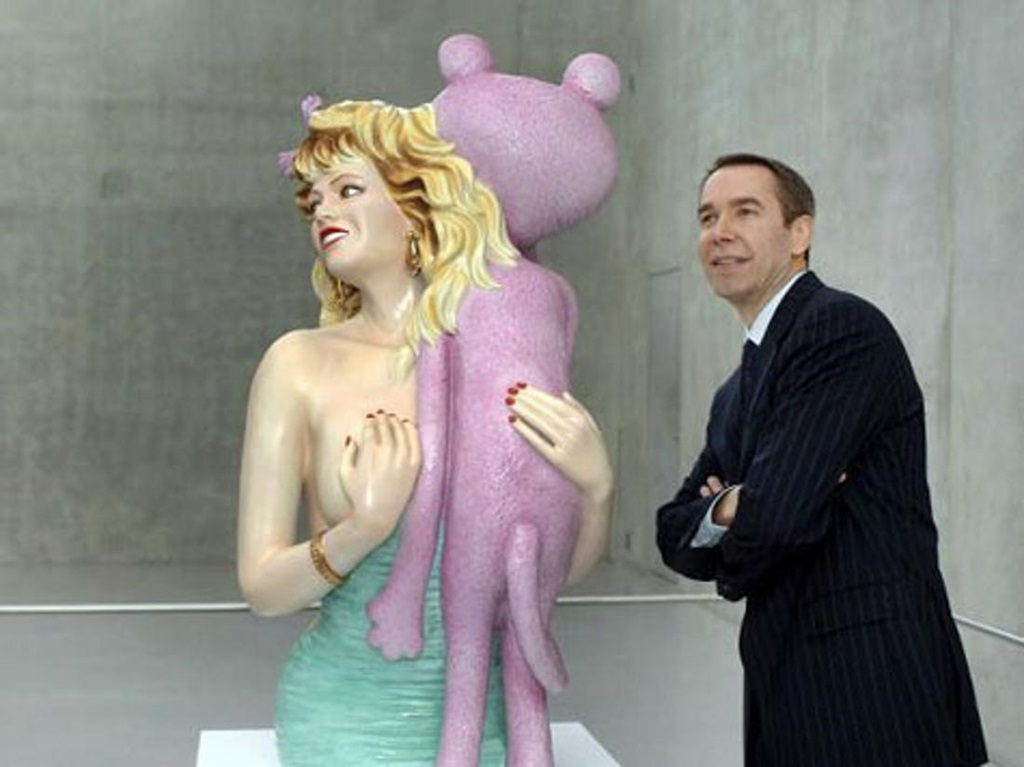Jeff Koons’ “Pink Panther” (1988) is a glazed porcelain sculpture that reimagines two pop culture icons. First, we have Jayne Mansfield, a Hollywood starlet from the 1950s and 1960s known for her glamorous and somewhat exaggerated feminine look. She’s paired with the equally recognizable Pink Panther AP art history. This unlikely duo forms a sculpture bursting with vibrant colors and a glossy, almost commercialized finish.
Why is Pink Panther AP Art History Important?
“Pink Panther” is an excellent example of several pivotal concepts within Pink Panther AP art history:
- Postmodernism: The sculpture emerged during the Postmodernist art movement, which challenged traditional notions of high and low art. Koons intentionally used pop culture references, blurring the lines between “refined” art and mass-produced entertainment objects.
- Kitsch: Koons’ work often flirts with kitsch, a term used for art considered overly sentimental or gaudy. “Pink Panther” fits this bill with its bright colors, smooth surfaces, and seemingly superficial subject matter.
- Appropriation: Koons didn’t invent Jayne Mansfield or the Pink Panther characters. Instead, he appropriated them, transforming their meanings within an artistic context. This forces us to examine how popular imagery is used and reused over time.
- Irony and Ambiguity: Is “Pink Panther” a sincere celebration of pop culture or a subtle critique of consumerism and commercialized culture? Koons intentionally leaves this interpretation open, encouraging viewers to form their own conclusions.
Unpacking the Visuals
When analyzing “Pink Panther,” consider these elements:
- Color: The soft pinks, blues, and greens recall 1950s pastel trends, evoking a sense of manufactured nostalgia.
- Form: The sculpture is highly stylized and smooth. This almost industrial finish gives it a mass-produced look.
- Composition: The juxtaposition of Mansfield’s overtly sexualized pose with a weary-looking Pink Panther creates a dissonant, slightly humorous effect.
Let’s Talk About the Banality Series
“Pink Panther” was part of Koons’ larger “Banality” series. This collection of works drew heavily from commercialized imagery like Hummel figurines or cute animal sculptures. By rendering these commonplace objects on a large scale in precious materials, Koons questioned ideas about taste, value, and the very nature of art.
Why Was “Pink Panther” Controversial?
Koons’ work is often a polarizing subject. Here’s why “Pink Panther” stirred up debate:
- The Blurred Line Between Art and Kitsch: Some critics argue that Koons merely copies pop culture without offering profound commentary. Others see his work as a sophisticated critique of the very concepts of taste and value in art.
- Commercialization of Art: Was Koons truly challenging artistic hierarchies, or was he cleverly playing into the high-end art market? The vast sums his work fetches at auction only fuel this debate.
- Ambiguity and Lack of Closure: Some find the open-ended interpretations of his artwork frustrating. Koons rarely provides a definitive statement on his intentions, leaving the viewer to grapple with the work’s meaning.
Thinking Beyond the Sculpture
To fully grasp the depth of Koons’ work, consider broader social and historical contexts:
- Consumer Culture: Koons’ work emerged in the 1980s when consumerism and mass media reached a fever pitch. His art reflects this fascination with images, advertising, and manufactured desire.
- Celebrity Culture: Jayne Mansfield was part of a wave of Hollywood figures whose image and public persona became as crucial as their film roles. Koons taps into this manufactured nature of celebrity.
- Legacy of Pop Art: While Koons is considered Postmodern, his work draws connections to earlier Pop Artists like Andy Warhol, who also incorporated mass culture into their artwork.
Comparisons and Contrasts
To get an even better sense of “Pink Panther’s” place in art history, let’s compare it to other notable works:
- Andy Warhol’s Campbell’s Soup Cans: Both Warhol and Koons elevate commonplace objects to the status of fine art. However, Warhol’s work is detached, while Koons seems to revel in consumerist culture’s seductive and shiny surfaces.
- Marcel Duchamp’s Fountain: Duchamp’s infamous readymade (a signed urinal) challenged what could considered art. Similarly, Koons provokes debate about the boundaries of art and the artist’s role.
- Classical Sculptures: The idealized forms and severe themes of classical sculptures are wildly different from the pop culture references and glossy finish of “Pink Panther.” Koons plays with this contrast, asking if mass-produced kitsch can hold the same artistic status as historical masterpieces.
Additional Themes and Considerations
Here are some more themes to consider when analyzing “Pink Panther” for AP Art History:
- Sexuality and Gender: The overtly sexualized depiction of Jayne Mansfield raises questions about gender representation in art. Is Koons perpetuating outdated stereotypes or critiquing how women are frequently objectified?
- Humor: There’s undeniable humor in the absurdity of “Pink Panther.” Is this playful commentary, or does it trivialize the potential for deeper meaning within the work?
- Originality: How much originality is there in appropriation-based art? Does Koons’ recontextualization create something new, or is it simply rehashing existing imagery?
The Ongoing Relevance of Jeff Koons
The questions Koons raises about taste, consumerism, and the very nature of art continue to be relevant topics. Our world is even more image-saturated and consumer-driven than during his breakthrough in the 1980s. This makes his work a powerful lens through which to examine our relationship with popular culture.
Conclusion
Jeff Koons’ “Pink Panther,” beyond its bright colors and playful form, is a complex work that invites discussion and multiple interpretations. Whether you find it a brilliant commentary on consumer culture or a cynical exploitation of commercialism, it undeniably leaves an impact essential to understanding contemporary art and its relationship with our world.
FAQs
What materials is “Pink Panther” made from?
It is made from glazed porcelain, a type of ceramic known for its glossy white finish.
Where is the original “Pink Panther” sculpture displayed?
It’s in the Museum of Modern Art (MoMA) collection in New York City.
How much did the “Pink Panther” sculpture sell for?
There were multiple editions of “Pink Panther.” One sold for $17 million at a Sotheby’s auction in 2011.
What were the main criticisms directed at Koons’ work?
Many critics leveled accusations against him, claiming his work was superficial, lacked intellectual depth, and focused purely on commercial success.
What is Jeff Koons’ overall contribution to art history?
Koons forced the art world to confront the power of popular culture, questions of taste, and the artist’s role in a society oversaturated with imagery. He successfully blurred the lines between high art and kitsch, whether you celebrate that or not.

